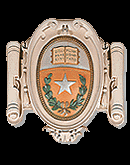| Main Page |
| Information ·Instructor Info ·Class Info ·Acknowledgements ·Dedication ·Bibliography |
| Class Topics ·Ng'amoritung'a ·Nabta ·Petroglyphs ·African Stars ·Borana Calendar ·Sky of Kenya in 300 BC ·The Future |
| Class Research ·Class Emails ·Outside Emails |
| Class Products ·Fiction Stories ·Art Drawings |
| Maps of Africa |
| Other Links |
| Namoratunga Summary of Doyle and Wilcox Article The article "Statistical Analysis of Namoratunga: An Archaeoastronomical Site in Sub-Saharan Africa?" written by Laurance R. Doyle and Thomas J. Wilcox examines the probability of randomly obtaining 25 or more stone alignments with seven random positions in the sky as a test of the possible astronomical alignments of the stones at Namoratunga II. The article begins with a synopsis of previous work conducted at Namoratunga II by Lynch and Robbins in 1978-1979. Their research introduces the first evidence for possible archaeastronomical stone alignments at Namoratunga II. Later analysis conducted by Soper in 1982 suggested possible deviations in the calculations of alignments, conducted by Lynch and Robbins, due to the stone's magnetic properties. Soper also raises the issue of the utility of the pillars with respect to the Borana calendar. He is sceptical that the Borana calendar even dates back to 300 BC, the age of the site proposed by Lynch and Robbins. These issues are taken head-on in the Doyle and Wilcox article. Doyle apparently revisited the site and took his own measurements of the alignments. He found 25 two-pillar alignments with the 300 BC) horizon rising positions of the seven Borana calendar stars. He also reports 25 two-pillar alignments with the 300 BC setting positions of the seven Borana stars and suggests that alignments on the eastern horizon only may underestimate the number of alignments. Measurements taken by Soper at Namoratunga II used the highest point of the stone as the line of sight. Doyle and Wilcox contest this assumption and use the geometric center of the stones, as seen from above, for their reference points. Testing of the alignments in 300 BC was performed by a program run on a NASA supercomputer to determine the probability of the alignments ocurring at random. The numerical experiment was run 10,000 times and the liklihood of having 25 or more alignments arise by chance is 0.0041. The most feasible number of stone alignments ocurring at the site is 13. The authors do a good job of critiquing their work. They discuss possible sources of error in their research. These include: overestimating the accuracy of alignments, too broad a definition of alignment, stone shifting, and location of pillar measurement. Evidence is then presented to support the validity of their claims. I feel this this article handles the questions raised about Namoratunga II in a very practical and comprehensive manner. Though there is still research to be performed, as the authors admit, I believe that the evidence does point to Namoratunga II being a significant archaeoastronomical site. (N. Griffin) |

